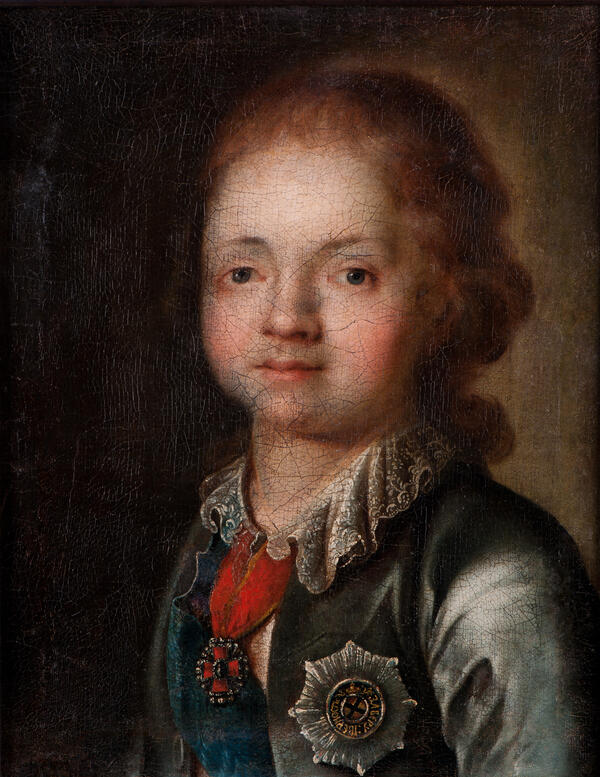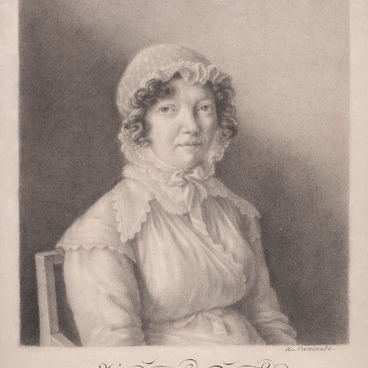Prince Constantine (1779-1831) was the second son of Grand Duke Paul I and Grand Duchess Maria Feodorovna, second grandson of Catherine II. It was the Empress who gave him the name Constantine, which is unusual for the Romanov dynasty. In the 1870s, Catherine the Great was fascinated by the development of the ‘Greek project’, according to which, among other things, it was supposed to recreate the Byzantine Empire in Constantinople. The empress’s grandson, named after the founder of the city, was to take the throne. Catherine II was assisted by Prince Grigory Potemkin and the Empress’s secretary, Prince Alexander Bezborodko.
To honor the birth of Paul I second son, a medal was struck, on which the Constantinople Church of Hagia Sophia was presented in the distance, and a rising star was visible above it. His Serene Highness Prince Grigory Aleksandrovich Potemkin arranged a terrific celebration on his birthday with fireworks, illumination, and an invited choir, which performed songs in Modern Greek during the celebration.
Grand Duke Constantine Pavlovich participated in the campaigns of Alexander Vasilyevich Suvorov against the French troops in Northern Italy, the Swiss Campaign. According to the famous commander, the Prince ‘encouraged the troops with his bravery and led to fearlessness’. Also, Prince Constantine came off in the anti-Napoleonic campaigns. From 1814 he was already the commander-in-chief of the Polish army and the de facto governor of Poland.
Grand Duke Constantine Pavlovich died at the age of 53 from cholera.
The portrait comes from one of the estates of the Zaraysk district. Initially, it was attributed as a portrait of Paul I. However, after repeated attribution by art critic Andrei Viktorovich Chekmarev, it turned out that the portrait belongs to the few images of young Constantine. This is a variation on the portrait of the second son of Paul I, painted by Dmitry Grigorievich Levitsky around 1787. The famous portrait painter created paired half-figure images of brothers, Alexander and Constantine, inscribed in an oval and turned towards each other.
Similar portraits of Constantine, where sometimes the color of the costume, the position of the ribbon of the Order of St. Andrew the First-Called and the nature of the lace collar changes, can be found in the collections of Elena and Mikhail Karisalov, Catherine and Vladimir Semenikhin, in the Hermitage, the Museum and Exhibition Center ‘New Jerusalem’, the Far Eastern Art Museum and the Yaroslavl Art Museum.
To honor the birth of Paul I second son, a medal was struck, on which the Constantinople Church of Hagia Sophia was presented in the distance, and a rising star was visible above it. His Serene Highness Prince Grigory Aleksandrovich Potemkin arranged a terrific celebration on his birthday with fireworks, illumination, and an invited choir, which performed songs in Modern Greek during the celebration.
Grand Duke Constantine Pavlovich participated in the campaigns of Alexander Vasilyevich Suvorov against the French troops in Northern Italy, the Swiss Campaign. According to the famous commander, the Prince ‘encouraged the troops with his bravery and led to fearlessness’. Also, Prince Constantine came off in the anti-Napoleonic campaigns. From 1814 he was already the commander-in-chief of the Polish army and the de facto governor of Poland.
Grand Duke Constantine Pavlovich died at the age of 53 from cholera.
The portrait comes from one of the estates of the Zaraysk district. Initially, it was attributed as a portrait of Paul I. However, after repeated attribution by art critic Andrei Viktorovich Chekmarev, it turned out that the portrait belongs to the few images of young Constantine. This is a variation on the portrait of the second son of Paul I, painted by Dmitry Grigorievich Levitsky around 1787. The famous portrait painter created paired half-figure images of brothers, Alexander and Constantine, inscribed in an oval and turned towards each other.
Similar portraits of Constantine, where sometimes the color of the costume, the position of the ribbon of the Order of St. Andrew the First-Called and the nature of the lace collar changes, can be found in the collections of Elena and Mikhail Karisalov, Catherine and Vladimir Semenikhin, in the Hermitage, the Museum and Exhibition Center ‘New Jerusalem’, the Far Eastern Art Museum and the Yaroslavl Art Museum.



